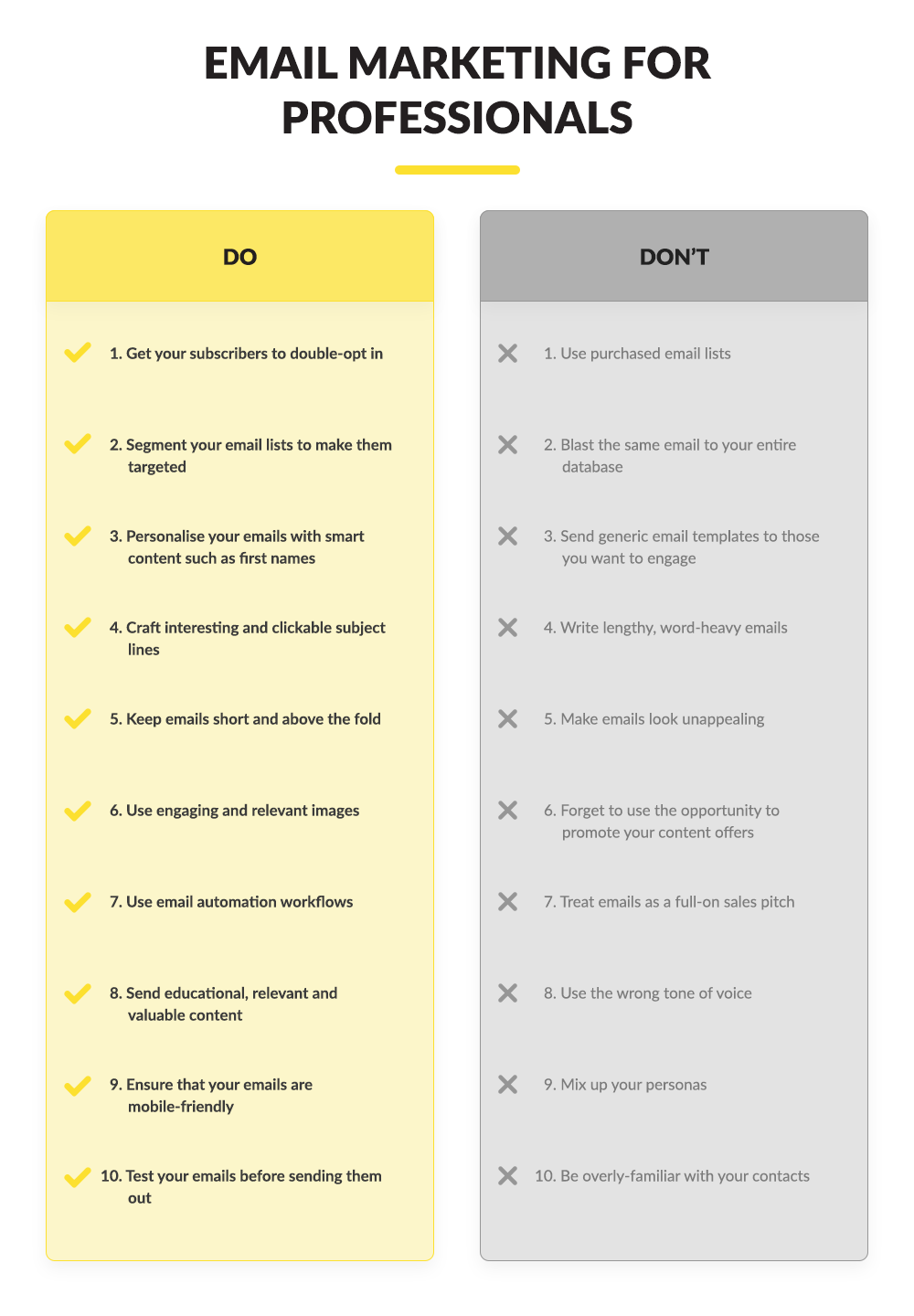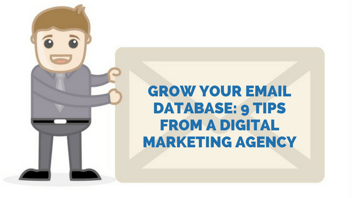Email marketing is still going strong in 2018. In our previous blog, ‘The State of Email Marketing Trends 2017’, we noted that 86% of businesses prefer email as the number one option for sending communications. On top of that, email is lauded as the top channel by at least 73% of people for being able to measure return on investment, overtaking contenders such as websites, social media and SEO.
Successful email marketing is to ensure that your business has set-up a well-oiled machine that is effective at drawing in your leads with valuable information and being able to nurture them into clients.
Because it’s still such a popular platform, we thought we would put together an infographic detailing the top Do’s and Don’ts for professional services firms using email marketing.
Without further ado, here are our do’s and don’ts:
 Conclusion
Conclusion
We hope you found our essentials of email marketing Do’s and Don’ts helpful and that it’s helped to highlight some key items that you could be focusing on when sending emails to your clients.
So to review:
DO
- Grow your subscriber list organically by getting each and every one of them to double opt-in - you’ll be well ahead of the GDPR deadline if you do!
- Target your emails by segmenting your lists
- Use personalisation like first names in your email
- Write subject lines that will make the recipient want to open up your email
- Keep your emails short and to the point
- Use images to keep your email engaging and interesting
- Utilise email workflows such as HubSpot to help with lead nurturing
- Send content that is relevant and useful
- Optimise your emails for mobiles and tablets
DON’T
- Purchase email lists because you won’t have the prior consent of those individuals
- Send the same email to your entire database, it may not be relevant to all
- Send generic or bland emails
- Write overly wordy emails that will turn off your recipients
- Let your emails look unappealing and hard to read
- Forget to promote your content offers and other relevant information
- Try to pitch your services too soon
- Use the wrong tone of voice in your email as it could be misread
- Send the wrong emails to the wrong personas
- Be overly-familiar with your contacts by using things like nicknames or slang terms
As an added note, it’s not long until GDPR arrives and as a result, businesses need to start changing the way they work in order to ensure they are compliant. Even processes such as email marketing will need to be reviewed and it’s why we’ve created a GDPR Toolkit for businesses.




